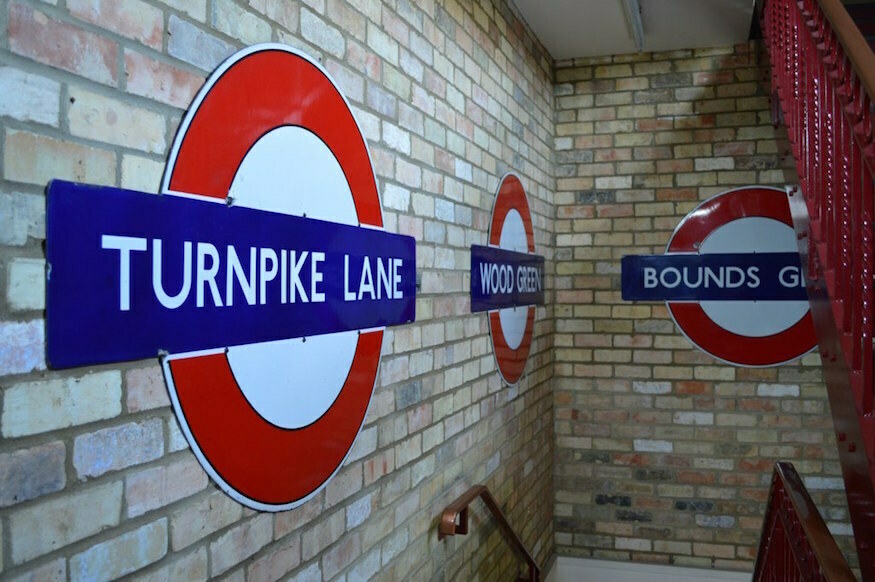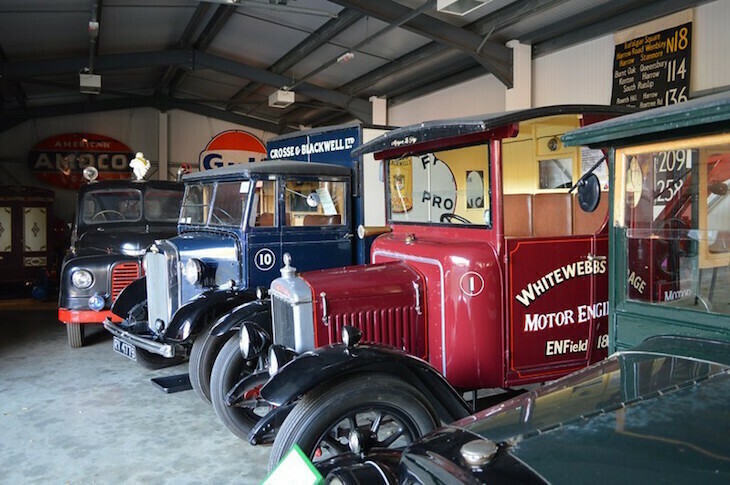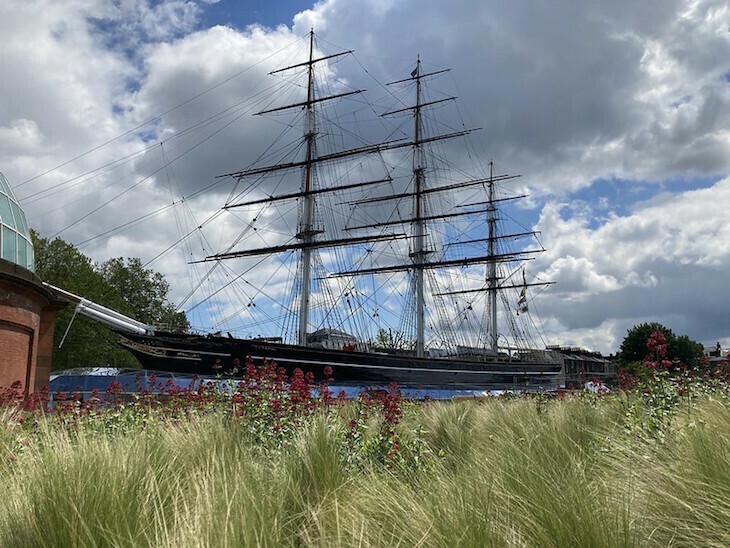
Looking for something to do in London but want to avoid the big museums? Fancy a day out without the crowds, or on a budget? We've put together some alternatives to London's biggest attractions: smaller, lesser-known (and therefore less busy) and occasionally cheaper versions of the capital's main landmarks.
That's not to say we don't love London's headline attractions. We absolutely do. But even seasoned Londoners might find a new favourite place in this list. Got any other suggestions? Let us know in the comments.
For a far more detailed look at London's 'alternative' attractions, browse our museums and galleries flowchart.
Natural History Museum: Grant Museum of Zoology

A lot of people who visit the Natural History Museum are there for the dinosaurs, or the whomping great whale, in which case, crack on, as nowhere in London does dinosaurs or whales better.
However, if it's more general zoology you're after — a few skeletons, a couple of taxidermy specimens, perhaps a jar of preserved mammals, that kind of vibe — the Grant Museum of Zoology at UCL is a gem of a place, and one of the best small museums in London, in our humble opinion.
In one charmingly old-fashioned museum room — think dark wood display cases, and skeletons peering down at you from the mezzanine above — you can peruse dodo bones, one of only seven remaining quagga skeletons (an extinct type of South African zebra) in the world, and the famous jar of preserved moles because... well, why not?
Forget dinosaurs selfies: the mirrored ceiling of the micrarium (a tiny backlit room displaying microscope slides) is the place to snap a photo to remember your visit. Oh, and we know we said this isn't the place for anyone interested in whales, but it's a little-known fact that the Grant Museum does have a whale skeleton. It's 29ft-long, but you won't see it because it's tucked away in various boxes in the store cupboard out the back. Best stick to South Ken for all your whale needs, then.
See also: The Natural History Gallery at Forest Hill's Horniman Museum is an excellent place for ogling taxidermy specimens. The comically oversized walrus sits among more accurately stuffed birds and mammals, as well as skeletons of all manner of creatures.
British Museum: Petrie Museum of Egyptian Archaeology

Hailing from Egypt, the Rosetta Stone is one of the most visited objects in the British Museum's vast collection — so much so that an exhibition centred around it opened in October 2022. But Bloomsbury's granodiorite behemoth isn't the only place in London with Egyptian artefacts. In fact, there's a whole museum dedicated to them.
The Petrie Museum of Egyptian Archaeology at UCL has a collection of around 80,000 Egyptian and Sudanese artefacts, including one of the earliest pieces of linen from Egypt (dating to about 5000BC), as well as the oldest wills on papyrus paper, the oldest gynaecological papyrus and the only veterinary papyrus from ancient Egypt. It was started in 1892 when writer Amelia Edwards donated her collection of Egyptian antiquities, and significantly expanded in 1913 by the excavations of William Flinders Petrie.
The Petrie Museum is free to visit, open to all ages (check opening times before visiting), and significantly smaller than the British Museum.
London Aquarium: Horniman Museum Aquarium

If it's sharks swimming overhead as you stroll through a transparent tunnel you're after, the Sea Life London Aquarium is the place for you. For a more chilled out aquarium experience, head to the Horniman Museum's Aquarium. The watery attraction is more than a century old and has 15 exhibits showing different habitats, from British ponds to Fijian coral reefs. There's a purpose behind it too, as the aquarium staff work on research into coral reproduction. A great call for young kids with shorter attention spans.
Science Museum: various other museums

Science Museum's vast collection is so extensive, that recommending an alternative venue depends on what you want to see.
PLANES: If you're a fan of the Flight Gallery, covering all things aviation, Hendon's RAF Museum is home to six hangars of aeroplane-related paraphernalia, including Spitfires and the Avro Lancaster bomber. Plus, the Spitfire Experience is an alternative to Science Museum's own Red Arrows 3D simulator. The Imperial War Museum also has a Spitfire and Harrier Jet on display, but if it's more aviation history rather than the planes themselves that you're after, make a note of the next open day at Croydon Airport Visitor Centre.
MEDICINE: The Science Museum's Medicine: The Wellcome Galleries give a clue for an alternative in the name. Wellcome Collection, a completely separate organisation on Euston Road is also a free museum, focusing on 'health and human experience'. The Royal College of Physicians near Regent's Park has its own museum, and the Florence Nightingale Museum, Hunterian Museum (reopening shortly), Old Operating Theatre and Bethlem Museum of the Mind all have medical aspects to them too. Sadly the Royal London Hospital Museum is no more.
SPACE: Science Museum's Exploring Space gallery focuses on rockets, satellites, and other manmade aspects of the universe beyond planet Earth, and for that sort of thing, there's nowhere better in London. For stars and the like, the Royal Observatory Greenwich is fascinating — or check out our guide to stargazing in London for other little-known observatories around the capital.
MORE SCIENCE: London has dozens of museums, large and small dedicated to various aspects of science. Of particular note are Science Gallery at London Bridge, which focuses on work by researchers at King's College. The Faraday Museum at the Royal Institution is a shoo-in for anyone interested in the experimental aspect of science.
The Shard: The Sky Garden

View-wise, nothing's going to beat The View from The Shard. Topping out at the 72nd floor of the Marmite-esque monolith, you can't go any higher in London (unless you're Jason Hawkes). But with tickets starting at £28, there are certainly cheaper views to get an eyeful of ant-like people marching over the toy town streets of London below.
The Sky Garden's no secret. Since it opened in 2015, it's been touted as the free alternative to The Shard, leaning out towards its loftier nemesis on the opposite side of the Thames. Located on floors 35-37, it doesn't quite compete in terms of height, but tickets to visit are free, or you can book into one of the restaurants.
See also: These days, The Sky Garden is far from the only free viewing platform in London, largely due to many developers having to incorporate public areas into their new buildings. Other free viewing platforms include The Garden at 120 (15th floor); One New Change roof terrace (sixth floor — not that high, but puts you nose-to-nose with the dome of St Paul's); and the Post Building in Holborn (ninth floor).
Imperial War Museum: National Army Museum

Lambeth's Imperial War Museum focuses on all aspects of conflict from the first world war to the present day. It's free entry, and never that busy (if you can dodge school trips), so you absolutely should visit. But if you've been there, done that, there are other places in London where you can explore the history of the Armed Forces.
Chelsea's National Army Museum focuses, unsurprisingly, on the Army specifically, though its timespan is much broader — some artefacts date back 600 years. The British Army and other Land Forces of the British Crown (including the former Indian Army until 1947) are covered through personal objects such as uniforms, photos and letters. It's an interactive and family-friendly place, with more nimble members of the family invited to practise their army crawl in a clear perspex tunnel beneath a tank.
See also: The RAF Museum (already mentioned above) for aerial combat; the National Maritime Museum for aspects of Navy life; The Guards Museum for members of the Armed Forces who protect the Royals. Plus the Imperial War Museum also owns Churchill War Rooms and warship HMS Belfast.
National Gallery: Dulwich Picture Gallery

Rembrandt, Rubens, Gainsborough and Canaletto. All revered artists whose work can be seen in the permanent collection of Dulwich Picture Gallery, in a roll call to rival that of the better-known National Gallery.
Dulwich Picture Gallery — which claims to be England's oldest gallery, predating its central London counterpart by almost 200 years — is home to 600 pieces in total, predominantly European paintings, some of them dating back more than four centuries. The gallery also hosts regular temporary exhibitions — Moomins creator Tove Jansson and Dutch graphic artist M.C. Escher have featured in recent years.
See also: The Wallace Collection in Marylebone houses more works by big-name artists including Titian, Velázquez, Rubens and Van Dyck, and expands beyond paintings with decorative arts and armour on display too.
London Transport Museum: Whitewebbs Museum of Transport

We love, love, love the London Transport Museum, Covent Garden's mecca of all things bus, train and tube. You can (pretend to) drive a tube train, for goodness sake, and what could beat that?
But for a completely different transport museum experience, head north to Enfield and Whitewebbs Museum of Transport, which focuses less on public transport and more on... well, any kind of transport imaginable.
Vintage cars and motorcycles rub footplates with bicycles and pedal cars, historic fire engines, ambulances and tractors. A 1960s AEC Routemaster will appease fans of the Covent Garden museum, and the outdoor buildings include a recreation of a fire station. A word of advice from our visit to Whitewebbs: look out for the Michael Jackson-esque mannequin, and if they offer to show you the well, just say yes.
Whitewebbs only opens occasionally, so check before you make a specific journey.
See also: The London Bus Museum, located just a couple of miles beyond London, into Surrey, and home to dozens of buses, from horse-drawn vehicles to the earliest motor buses, and beyond. Also, Concorde is parked up right outside the door.
Buckingham Palace: Fulham Palace

You want to see inside a palace, but Buckingham Palace only opens its doors to us commoners for a few weeks a year — and it's not cheap.
Of course, London has other palaces — Kew, Hampton Court — which are open to the public, but did you know there's one you can visit for free?
Fulham Palace isn't a royal palace, but rather a religious one (though royals have visited). It was home to consecutive Bishops of London between the 11th century and the 1970s, and has buildings dating from throughout this period, including a Victorian chapel, Tudor great hall, Georgian dining rooms. You can take guided tours of them today, and visit an on-site museum with artefacts relating to the palace's history. There's a keen focus on archaeology as work is ongoing to learn about the history of the site, and the 13-acre garden is home to rare plants and trees including a 500-year-old oak.
See also: Eltham Palace, south-east London's sometimes-overlooked Tudor/art deco building. Now managed by English Heritage, it began life as a medieval palace, with a great hall dating back 500 years. Henry VIII is known to have visited, but its revival came in the 1930s when wealthy Stephen and Virginia Courtauld transformed it into a splendid home — making it an ideal place for a day out which blends royal history with palatial opulence.
Kew Gardens: Chelsea Physic Garden
View this post on Instagram
Kew Gardens is the obvious place to go for plant life, but have you ever been to Chelsea Physic Garden? It predates the botanical gardens at Kew by almost a century, and at just four acres inside a walled garden alongside the Thames, makes for a more manageable day out than Kew's sprawling acreage.
Chelsea Physic Garden was founded by the Worshipful Society of Apothecaries as somewhere to grow medicinal and edible plants and herbs, and that remains its focus today, with 4,000 plants including the largest outdoor fruiting olive tree in Britain and the world's most northerly outdoor grapefruit tree — made possible by the garden's unique microclimate.
Paths criss-cross the garden, allowing visitors to get a closer look at different areas, including a rockery, glasshouses, and displays of edible, useful and medicinal specimens.
See also: The act of gardening, rather than plants themselves, is the focus of The Garden Museum, inside a former church in Lambeth. It has permanent displays of historical gardening tools, alongside botanical art. Additionally, Barbican Conservatory is a free alternative to Kew's glasshouses.
Cutty Sark: Golden Hinde

Greenwich's Cutty Sark is London's best-known dry-docked ship, but what if we told you there's another one — and it's a short walk from London Bridge?
The Golden Hinde is actually a full-size replica, rather than the original Elizabethan galleon ship Golden Hinde. (But hold on, history snobs. Due to restorations and the 2007 fire, Cutty Sark isn't completely original either, though it's claimed that 90% of the original ship was saved.)
There are plenty of technical and historical differences between the two vessels; The original Golden Hinde was almost 300 years older than Cutty Sark, and was the first English ship to circumnavigate the globe, captained by Sir Francis Drake. Cutty Sark is more than twice the length of The Golden Hinde, and was used as a trade vessel. These days, both offer a family-friendly day out ideal for budding pirates, with plenty of history, and actors in the role of original sailors to make the experience come alive.




